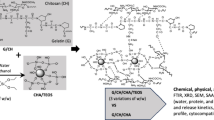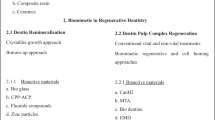Abstract
The toxicity of dental composites has been attributed to the release of residual monomers from polymerized resin-based composites due to degradation processes or incomplete polymerization. Some of these eluted substances have a genotoxic potential. We tested the hypothesis that realistic concentrations (and/or worst case concentrations/situations) of bisphenol-A-glycidyldimethacrylate (BisGMA), triethyleneglycol dimethacrylate (TEGDMA), 2-hydroxyethyl methacrylate (HEMA) and methyl methacrylate (MMA) found in elution experiments can cause DNA strand breaks in human gingival fibroblasts (HGF). Such DNA damage was compared with that resulting from ionizing radiation coming from natural sources, dental radiography or tumor therapy. TEGDMA, HEMA and MMA did not induce DNA strand breaks at concentrations of up to 10 mM. About 24 h after incubation with 0.25 mM BisGMA, significantly more DNA strand breaks were found in HGF compared to controls. DNA strand breaks caused by 0.25 mM BisGMA, correspond to DNA strand breakage caused by irradiation with 4 Gy, only used in the high single-dose irradiation tumor therapy. But 0.25 mM BisGMA is more than 100-fold higher than that concentration found in worst case calculations. Therefore, our data did not support our hypothesis.


Similar content being viewed by others
References
Anand AK, Jain J, Negi PS et al (2006) Can dose reduction to one parotid gland prevent xerostomia?–A feasibility study for locally advanced head and neck cancer patients treated with intensity-modulated radiotherapy. Clin Oncol 18:497–504
Arossi GA, Lehmann M, Dihl RR, Reguly ML, de Andrade HH (2010) Induced DNA damage by dental resin monomers in somatic cells. Basic Clin Pharmacol Toxicol 106:124–129
Birnboim HC, Jevcak JJ (1981) Fluorometric method for rapid detection of DNA strand breaks in human white blood cells produced by low doses of radiation. Cancer Res 41:1889–1892
Brenner DJ, Hall EJ (2007) Computed tomography-an increasing source of radiation exposure. N Engl J Med 357:2277–2284
Burdak-Rothkamm S, Short SC, Folkard M, Rothkamm K, Prise KM (2007) ATR-dependent radiation-induced gamma H2AX foci in bystander primary human astrocytes and glioma cells. Oncogene 26:993–1002
Chang MC, Lin LD, Chan CP et al (2009) The effect of BisGMA on cyclooxygenase-2 expression, PGE2 production and cytotoxicity via reactive oxygen species- and MEK/ERK-dependent and -independent pathways. Biomaterials 30:4070–4077
Di Pietro A, Visalli G, La Maestra S et al (2008) Biomonitoring of DNA damage in peripheral blood lymphocytes of subjects with dental restorative fillings. Mutat Res 650:115–122
Dickey JS, Baird BJ, Redon CE, Sokolov MV, Sedelnikova OA, Bonner WM (2009) Intercellular communication of cellular stress monitored by gamma-H2AX induction. Carcinogenesis 30:1686–1695
Durner J, Kreppel H, Zaspel J, Schweikl H, Hickel R, Reichl FX (2009) The toxicokinetics and distribution of 2-hydroxyethyl methacrylate in mice. Biomaterials 30:2066–2071
Durner J, Spahl W, Zaspel J, Schweikl H, Hickel R, Reichl FX (2010) Eluted substances from unpolymerized and polymerized dental restorative materials and their Nernst partition coefficient. Dent Mater 26:91–99
Elliott A (2009) Issues in medical exposures. J Radiol Prot 29:A107–A121
Fliedner TM, Graessle D, Paulsen C, Reimers K (2002) Structure and function of bone marrow hemopoiesis: mechanisms of response to ionizing radiation exposure. Cancer Biother Radiopharm 17:405–426
Forst HT (1985) Problems of multiple tests and evaluations in drug research. Arzneim Forsch/Drug Res 35:563–569
Geurtsen W, Lehmann F, Spahl W, Leyhausen G (1998) Cytotoxicity of 35 dental resin composite monomers/additives in permanent 3T3 and three human primary fibroblast cultures. J Biomed Mater Res 41:474–480
Goon AT, Bruze M, Zimerson E, Goh CL, Soo-Quee Koh D, Isaksson M (2008) Screening for acrylate/methacrylate allergy in the baseline series: our experience in Sweden and Singapore. Contact Dermatitis 59:307–313
Issa Y, Watts DC, Brunton PA, Waters CM, Duxbury AJ (2004) Resin composite monomers alter MTT and LDH activity of human gingival fibroblasts in vitro. Dent Mater 20:12–20
Klaassen C (1998) Heavy metals and heavy-metal antagonists. In: Hardman J, Limbird L, Molinoff P, Ruddon R (eds) Goodman and Gilman’s. The pharmacological basis of therapeutics. McGraw-Hill, New York, pp 1649–1671
Kleinsasser NH, Wallner BC, Harreus UA et al (2004) Genotoxicity and cytotoxicity of dental materials in human lymphocytes as assessed by the single cell microgel electrophoresis (comet) assay. J Dent 32:229–234
Kleinsasser NH, Schmid K, Sassen AW et al (2006) Cytotoxic and genotoxic effects of resin monomers in human salivary gland tissue and lymphocytes as assessed by the single cell microgel electrophoresis (Comet) assay. Biomaterials 27:1762–1770
Mahaney BL, Meek K, Lees-Miller SP (2009) Repair of ionizing radiation-induced DNA double-strand breaks by non-homologous end-joining. Biochem J 417:639–650
Menke M, Angelis KJ, Schubert I (2000) Detection of specific DNA lesions by a combination of comet assay and FISH in plants. Environ Mol Mutagen 35:132–138
Miletic VJ, Santini A (2008) Remaining unreacted methacrylate groups in resin-based composite with respect to sample preparation and storing conditions using micro-Raman spectroscopy. J Biomed Mater Res B Appl Biomater 87:468–474
Mitzel-Landbeck L, Schutz G, Hagen U (1976) In vitro repair of radiation-induced strand breaks in DNA. Biochim Biophys Acta 432:145–153
Moreno-Villanueva M, Pfeiffer R, Sindlinger T et al (2009) A modified and automated version of the ‘Fluorimetric Detection of Alkaline DNA Unwinding’ method to quantify formation and repair of DNA strand breaks. BMC Biotechnol 9:39–45
Nakamura AJ, Rao VA, Pommier Y, Bonner WM (2010) The complexity of phosphorylated H2AX foci formation and DNA repair assembly at DNA double-strand breaks. Cell Cycle 9:389–397
Polydorou O, Trittler R, Hellwig E, Kummerer K (2007) Elution of monomers from two conventional dental composite materials. Dent Mater 23:1535–1541
Povirk LF (2006) Biochemical mechanisms of chromosomal translocations resulting from DNA double-strand breaks. DNA Repair (Amst) 5:1199–1212
Redon CE, Dickey JS, Bonner WM, Sedelnikova OA (2009) Gamma-H2AX as a biomarker of DNA damage induced by ionizing radiation in human peripheral blood lymphocytes and artificial skin. Adv Space Res 43:1171–1178
Reichl FX, Seiss M, Kleinsasser N et al (2008a) Distribution and excretion of BisGMA in guinea pigs. J Dent Res 87:378–380
Reichl FX, Seiss M, Marquardt W et al (2008b) Toxicity potentiation by H2O2 with components of dental restorative materials on human oral cells. Arch Toxicol 82:21–28
Schweikl H, Schmalz G, Rackebrandt K (1998) The mutagenic activity of unpolymerized resin monomers in Salmonella typhimurium and V79 cells. Mutat Res 415:119–130
Schweikl H, Spagnuolo G, Schmalz G (2006) Genetic and cellular toxicology of dental resin monomers. J Dent Res 85:870–877
Schwengberg S, Bohlen H, Kleinsasser N et al (2005) In vitro embryotoxicity assessment with dental restorative materials. J Dent 33:49–55
Seiss M, Nitz S, Kleinsasser N et al (2007) Identification of 2, 3-epoxymethacrylic acid as an intermediate in the metabolism of dental materials in human liver microsomes. Dent Mater 23:9–16
Singh NP (2000) Microgels for estimation of DNA strand breaks, DNA protein crosslinks and apoptosis. Mutat Res 455:111–127
Spahl W, Budzikiewicz H, Geurtsen W (1998) Determination of leachable components from four commercial dental composites by gas and liquid chromatography/mass spectrometry. J Dent 26:137–145
Tehrany EA, Desobry S (2004) Partition coefficients in food/packaging systems: a review. Food Addit Contam 21:1186–1202
Urcan E, Scherthan H, Styllou M, Haertel U, Hickel R, Reichl FX (2010) Induction of DNA double-strand breaks in primary gingival fibroblasts by exposure to dental resin composites. Biomaterials 31:2010–2014
Uzunova Y, Lukanov L, Filipov I, Vladimirov S (2008) High-performance liquid chromatographic determination of unreacted monomers and other residues contained in dental composites. J Biochem Biophys Meth 70:883–888
Author information
Authors and Affiliations
Corresponding author
Rights and permissions
About this article
Cite this article
Durner, J., Dębiak, M., Bürkle, A. et al. Induction of DNA strand breaks by dental composite components compared to X-ray exposure in human gingival fibroblasts. Arch Toxicol 85, 143–148 (2011). https://doi.org/10.1007/s00204-010-0558-0
Received:
Accepted:
Published:
Issue Date:
DOI: https://doi.org/10.1007/s00204-010-0558-0




